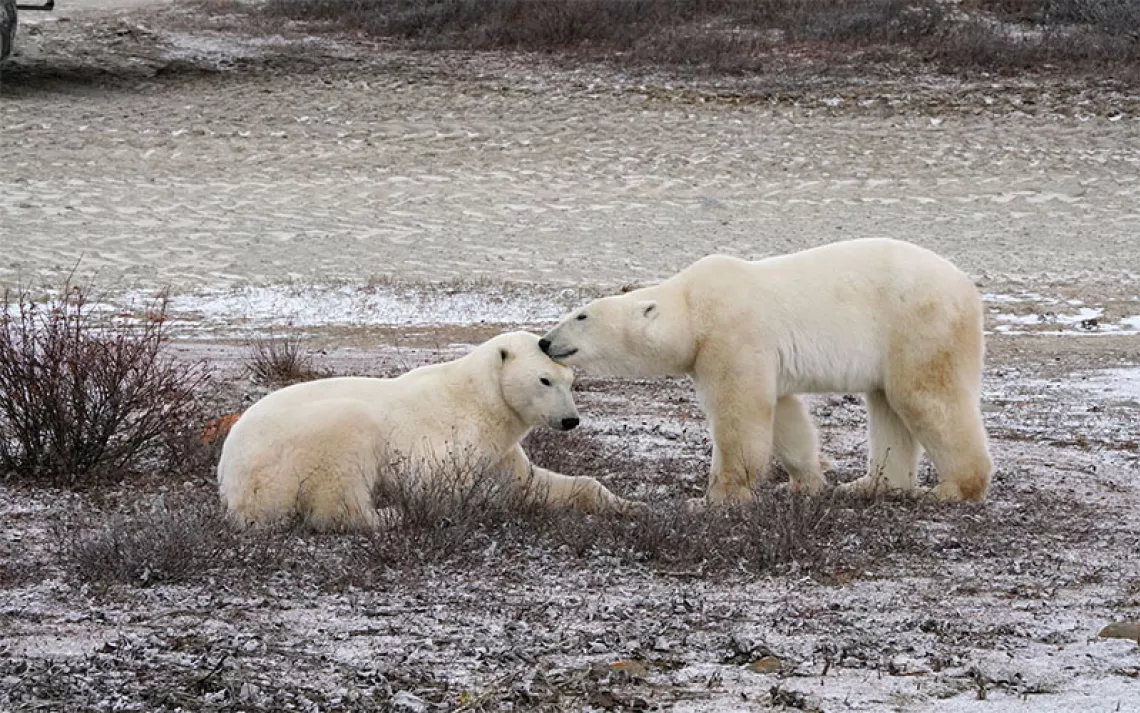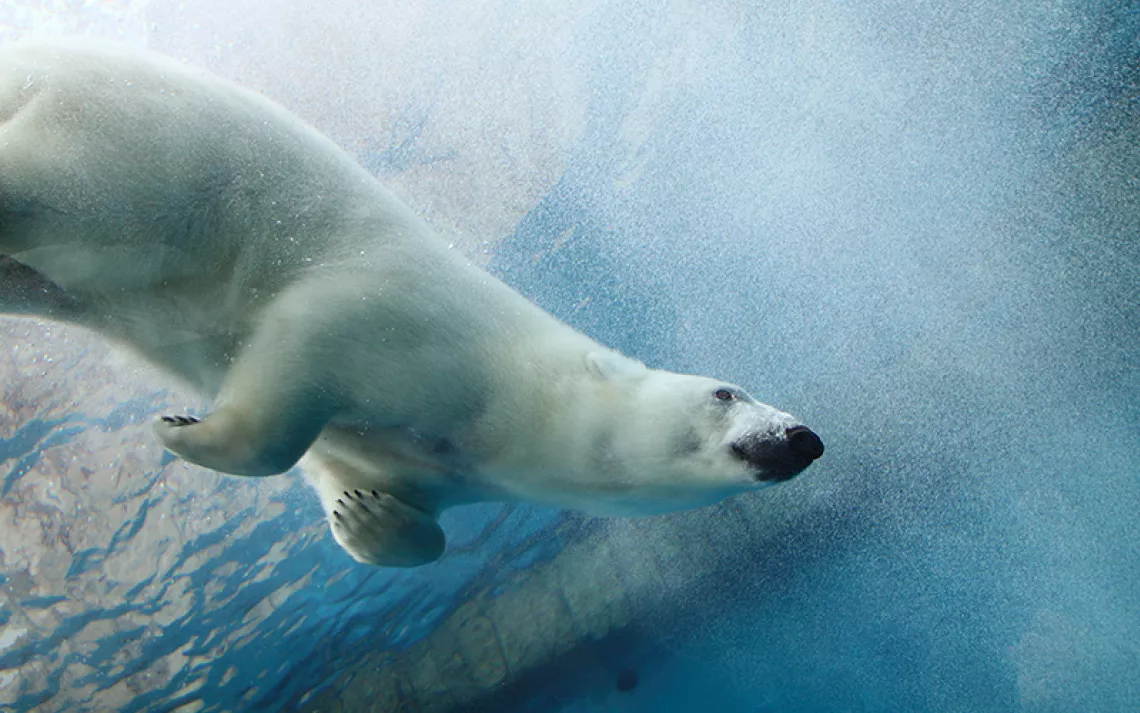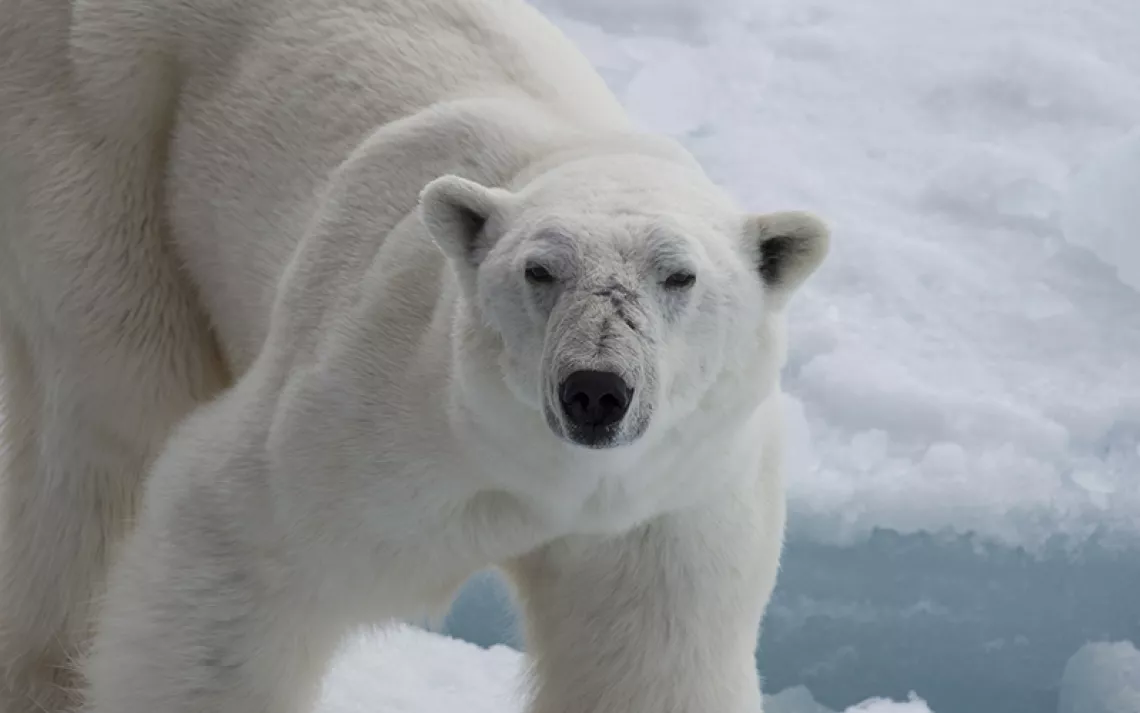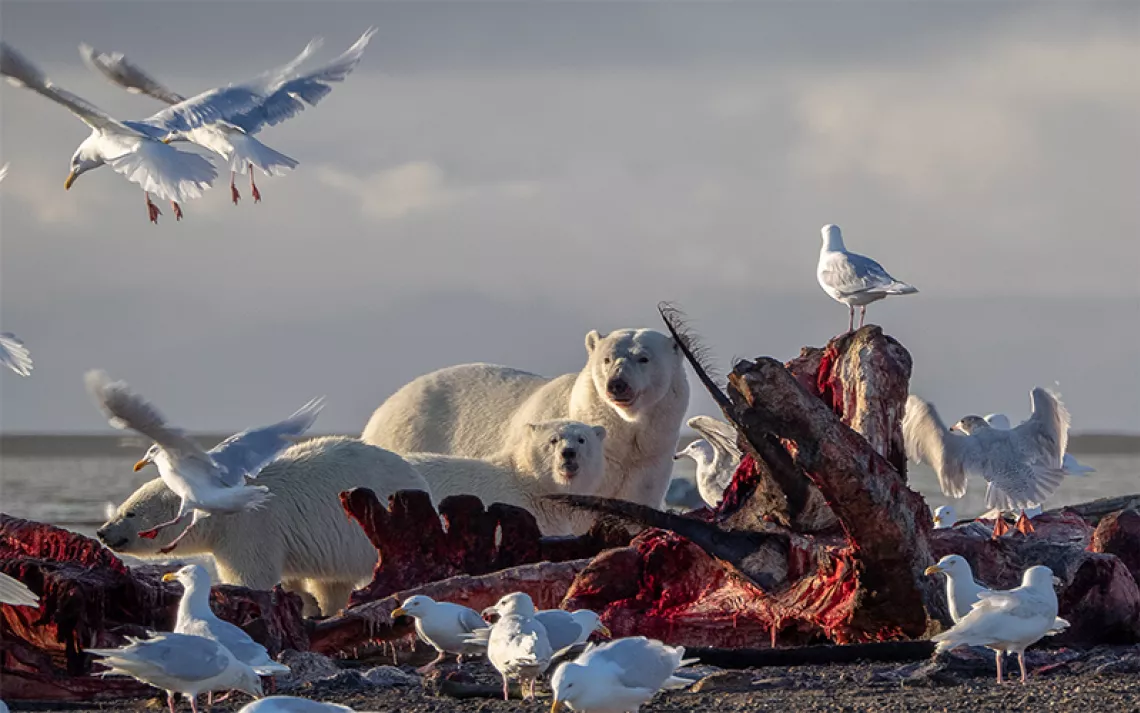Pizzlies and Grolars: The Polar Bears of Tomorrow
Rare hybrid grizzly polar bears are giving scientists hope for the future
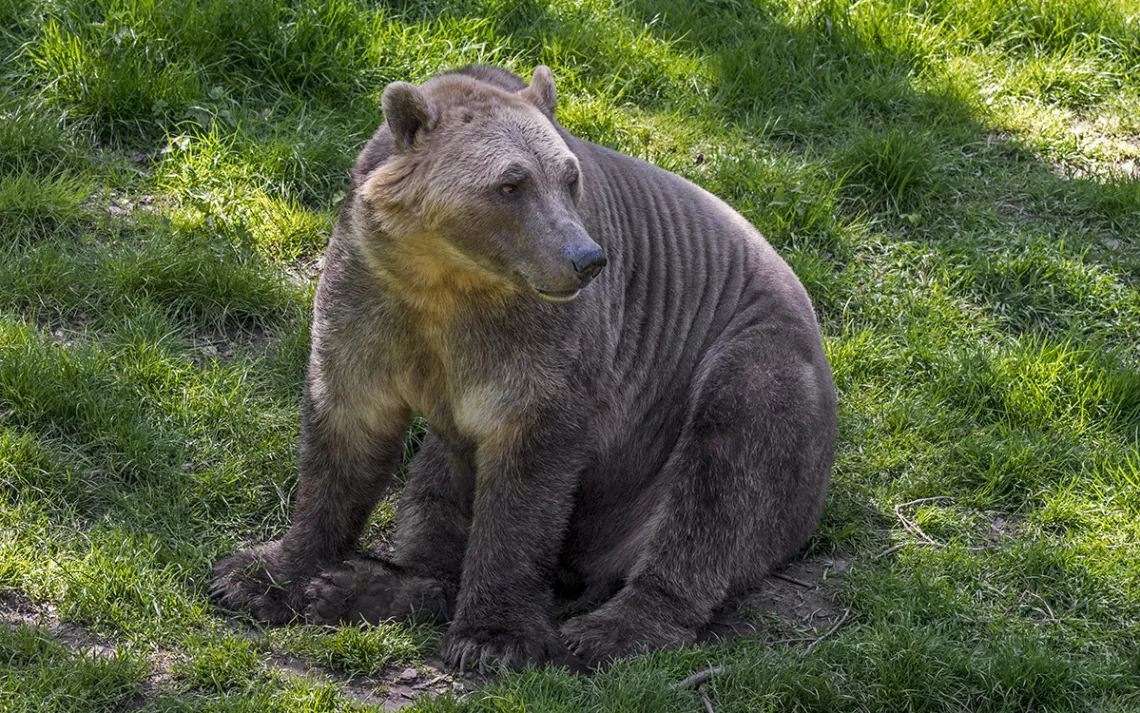
A brown bear–polar bear hybrid. | Photo by Philippe Clement/Arterra/Universal Images Group via Getty Images
In 2006, Andrew Derocher was in the field with an Inuit hunter when a message crackled over the CB radio: A strange-looking bear had been shot a few miles away. The bear, found at the southern tip of Banks Island in Canada’s Northwest Territories, didn’t look like a typical polar bear. With a dingy white coat and scattered tufts of brown fur, it resembled a dirty version of the Arctic predator. It had dark rings encircling its eyes like sunglasses, and its claws were a few inches too long.
Derocher, a professor of ecology at the University of Alberta, would later learn that the bear was the first known grizzly bear–polar bear hybrid found in the wild. Since then a handful of similar hybrids—nicknamed grolar bears or pizzly bears—have turned up.
While the bears are still rare, says Larisa DeSantis, an associate professor of biological sciences at Vanderbilt University, the new hybrids may become more common as the Arctic ice melts, depriving polar bears of their customary hunting grounds on ice floes. This forces them to hunt on land, where they increasingly encounter northerly-ranging grizzlies.
But DeSantis doesn’t think that hybridization is necessarily a bad thing. In fact, it gives her hope for the future.
Her recent study, published in the journal Global Change Biology, shows how polar bears, having split from brown bears some 600,000 years ago, have evolved toward a hyper-carnivorous diet. With a narrow skull and enlarged canines, they’re meant for diving through small holes in the ice and grabbing blubber-rich ringed and bearded seals.
DeSantis uses micro-wear on the teeth of both ancient and modern polar bears as well as those of modern grizzly bears to see what they had been eating. Her research shows that polar bears have traditionally consumed only soft foods such as blubber even during previous climate change events like the Medieval Warm Period a thousand years ago. But since the current warming period has been so rapid, DeSantis says, the bears are experiencing a dietary “tipping point” as they move onto land in search of terrestrial foods to fill their dietary needs.
“Polar bears require ample fat and blubber to get enough calories, but now they’re turning elsewhere for food, eating carcasses and even trash,” says DeSantis.
Grizzly bears, on the other hand, typically eat whatever they can get their paws on: fruit, salmon, seeds, shrubs, and tubers. Their wider jaw structure and stronger bite force make them better equipped to eat harder foods.
Additionally, DNA evidence shows that during a previous warming period 100,000 years ago, polar and grizzly bears successfully mated in the Admiralty, Baranof, and Chichagof Islands. When grizzly and polar bears mate, they produce viable babies that can also mate and breed. DeSantis says the potential of it happening again and more widely can help polar bears survive. “The hybrids are more robust and could be better equipped to survive climate change,” she says.
Chris Servheen, a retired grizzly bear expert for the US Fish and Wildlife Service, agrees with DeSantis that grizzly–polar bear hybrids could be more robust.
“Grizzly bears are much more flexible. In fact, it’s easier to describe the few foods that they don’t eat rather than what they do,” says Servheen, now a professor of wildlife conservation at the University of Montana. He notes that only a handful of hybrid examples have been found in the wild, although more could be hiding in remote areas like Northern Russia and other icy outposts. (Polar bears are famously difficult to study because of their isolated habitats.)

Sign up to receive Sierra News & Views
Get articles like this one sent directly to your inbox weekly.
With this action you affirm you want to receive Sierra Club communications and may vote on policy designated by the Sierra Club Board.
Servheen says that in recent years, polar and grizzly bears have been overlapping at bowhead whale carcass sites in places like Kaktovik, Alaska, a tiny village of 300 situated on the Beaufort Sea. The remains of traditional tribal whale hunts attract both grizzly and polar bears in search of easy nourishment.
Derocher, a biologist who’s spent his career studying polar bears, thinks that hybridization isn’t necessarily a good thing for polar bears, as grizzlies could overwhelm the polar bears’ DNA. The gene pool of brown bears across the world is massive, while the gene pool of polar bears is tiny.
“It’s like putting a drop of oil into a swimming pool,” says Derocher. “Polar bear features are genetically swamped by grizzly bears'.” If regular interbreeding occurred, polar bear features would almost immediately melt into the grizzlies'. Derocher says that the only way hybrids could maintain polar bear traits is if they continued to be geographically separate, maintaining some sort of segregation in the gene pools.
But both Derocher and DeSantis agree that if drastic steps aren’t taken to shrink carbon emissions, polar bears in the lower Arctic will soon disappear, leaving only those found at the very highest reaches of Greenland and the Canadian archipelago where the ice is still solid. We’ll always have an Arctic that’s dark and cold in the winter, says Derocher, but if it doesn’t stay cold enough throughout the year, it will be difficult to maintain a viable population of polar bears through the end of the century.
“Right now we’re not curbing greenhouse gas emissions in a way that would help polar bears,” says Derocher. And if we don’t reverse the trends soon, it won’t just be the bears that have trouble surviving.
 The Magazine of The Sierra Club
The Magazine of The Sierra Club
